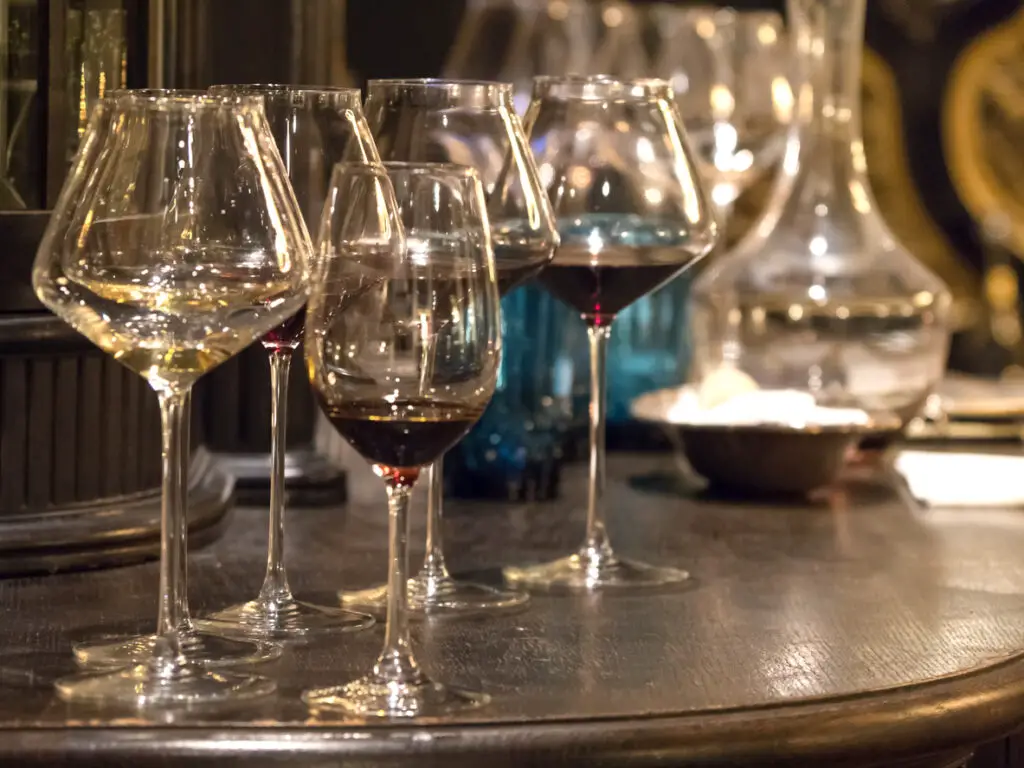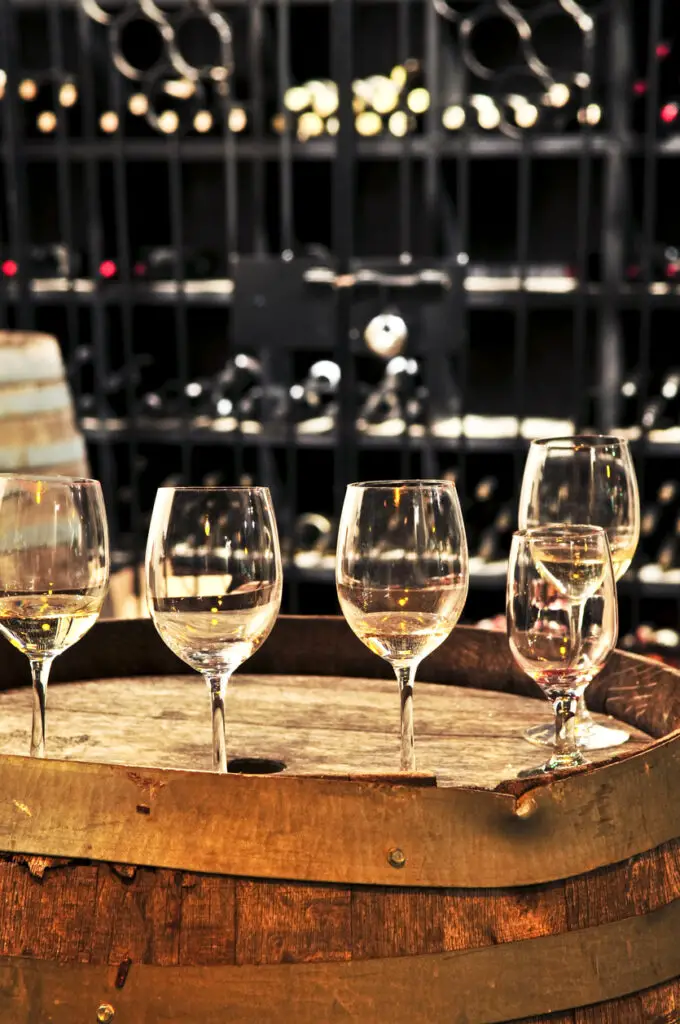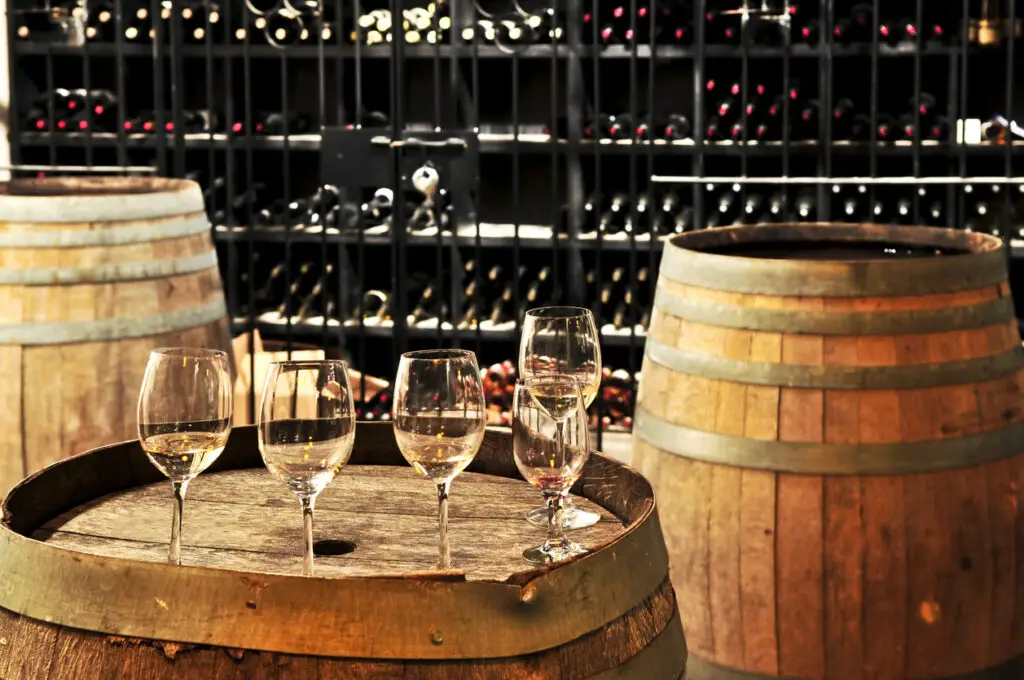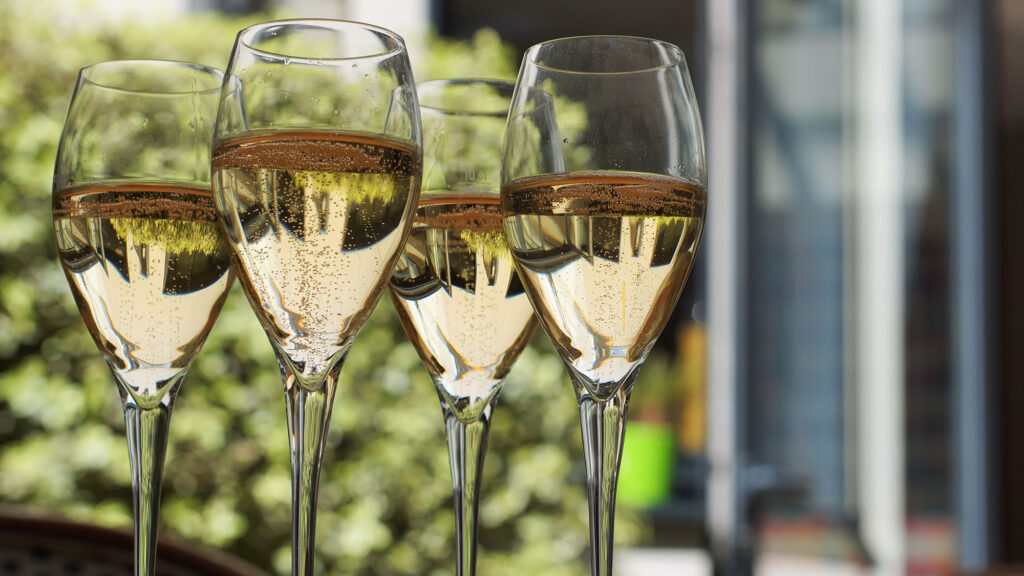Chardonnay is known as the queen of white wine and is one of the most popular grape varieties globally. One of the most popular winemaking methods for this wine is to let it age in oak barrels. But this may lead you to wonder, what does oak do to Chardonnay?
The most important way that oak affects Chardonnay is by imparting flavors like vanilla, toast, and caramel. The oak barrels create flavor complexity because Chardonnay grapes have a very malleable flavor profile.
Now let’s take a closer look at this wine and learn more!
Chardonnay Around The World
Just like every wine, a Chardonnay bottle starts off in the vineyard. And, vineyards for Chardonnay are everywhere! Though originating from the French Burgundy region, Chardonnay grapes now grow across the globe – in over 40 countries. This is a large array of climates, soils, and altitudes, meaning Chardonnay flavor profiles are also diverse.
Chardonnay has long reigned as the queen of white wine worldwide. The Chardonnay global planting percentages are constantly rising to reach the world’s long-time white grape favorite: Spain’s Airèn, used mostly for producing brandy. Chardonnay is close to reaching the top!
Architecture of Chardonnay
Chardonnay’s genetic makeup is what gives it the architectural range to be the diverse grape that it is. In fact, Chardonnay was born at least four centuries ago out of a crossing between Pinot Noir and Gouais Blanc.
Acidity is an essential part of Chardonnay wines. This structural strength is actually what forms the potential for Chardonnay to age well. The texture is another component of Chardonnay wines. These wines give generosity to the palate, offering a buffering effect on its acidic backbone.
A Chardonnay wine palate can range from being light as a feather to dense as a forest, but most tend to be weightier.
Chardonnay Aroma and Flavor Characteristics

Different Chardonnays can display a wide variety of aromas. On the tangier palate of the fruit flavor spectrum, Chardonnay expresses lemon and grapefruit. Slowly going up the ripeness scale are flavors like peach, melon, and green apple. Up another ripeness level are pear and yellow apple flavors. Further up are notes of baked apples and cobbler fruits along with tropical fruits such as pineapple.
Author Note: Chardonnay flavors aren’t limited to fruits. When grown in colder climates, they also showcase “mineral” notes. This is due to the stone-like influences such as oyster shells, chalk, and pencil shavings from the soil. Chardonnay wine aromas can be earthy, like garden dirt or fresh mushrooms.
Chardonnay’s Chameleon Effect
Much of the Chardonnay people enjoy drinking is a still, dry, varietal white table wine. The oak barrel flavor is expected to be present due to the popularity of using oak barrels in the cultivation process. But, Chardonnay is much more versatile than that!
Unoaked Chardonnay is becoming increasingly trendy. It is also used to make blends, sparkling wines, and sweet wines as well. Unoaked wine expressed nothing but the purity of the delicious Chardonnay grapes. Oaked Chardonnay bottlings integrate the use of barrels to further expand Chardonnay’s complexity.
Winemaking Basics of Chardonnay
Because of its wide spectrum of natural aromas and pliable infrastructure, Chardonnay is surely a winemaker’s playground!
Fermenting and Aging Chardonnay in Stainless Steel and Oak Barrels
The fermentation vessel type and size used by a winemaker is what greatly affects the flavor of the resulting Chardonnay. Using a stainless-steel tank for fermentation will lead to a firmer and more structured wine than that from a wood barrel or tank. A winemaker who uses stainless steel for fermentation also preserves as much of the fruit character from the vine as possible.
A porous material like wood allows for oxygen interaction with wine. This invigorates and stretches the palate of the wine, producing a broader mouthfeel as well as adding texture to be smoother. Oak also allows certain metabolic reactions such as Malolactic Fermentation to occur, so the wine becomes smoother.
If brand-new oak barrels or only once-used oak barrels are in the process, oak flavors will also be added to the Chardonnay. Using older oak will only change the Chardonnay’s mouthfeel. If well maintained, oak barrels can be reused by winemakers to make wine for many decades!
Some winemakers use both stainless steel fermentation along with oak barrel aging. These Chardonnays have a more distinct oak flavor. While fermenting in new oak, they are infused with flavors, while aging in new oak adds aggressive flavors. The former is similar to smoking meats, while the second is sort of like grilling them.
Length of Time Spent in Oak

The length of aging Chardonnay wines in oak barrels is also important in affecting the flavor. Similar to smoking foods, the longer Chardonnay stays in an oak barrel, the more significant the impact will be.
Author Note: So, how long can wine age in oak barrels? It really depends on the style of beverage the winemaker hopes to achieve. Chardonnay can age briefly -for just three months – or even “over vintaged”, meaning it stays in the barrel longer than the next harvest, or more than a year.
Flavors Added By Oak
Unlike beer, flavor additives cannot be used to produce flavored wines. This is why oak has become the accepted method of affecting the wine taste. When the oak is used, these flavors combine with those of the wine to create a whole range of new potential flavors. These include:
- furfural is the compound responsible for dried fruit, burned almond, and burnt sugar flavors
- guaiacol is responsible for burn overtones
- oak lactone is responsible for woody, dill, and coconut notes
- eugenol is responsible for spices, cloves, and a smoky character
- vanillan is responsible for vanilla
- syringaldehyde is responsible for vanilla-like notes
Battonage
Battonage is another winemaking technique used to enhance the texture and flavor of wines. This is the French term for mixing the yeast sediment. Once the yeast has turned sugar from the grapes into wine, they fall to the wine fermentation tank’s bottom.
If stirred, they add weight and doughy flavors to the wine. This works similar to hot chocolate. The chocolate precipitates to the bottom, and once you stir it, you will get a more flavorful and richer drink.
This is especially effective in oak barrels because they are much smaller than the large tanks, so it’s easier to mix the sediment and wine. Surprisingly, winemakers are starting to use stainless steel barrels in an attempt to improve the yeast sediment distribution in their wines. This is a great new innovation that we think will make wines even greater!
Malolactic Fermentation
As mentioned above, the final technique to fine-tune a Chardonnay is to let it- or a part of it – to undergo another fermentation process called malolactic fermentation. This is going to change Chardonnay’s natural tart malic acid into a milder and creamier lactic acid. If you have noticed a buttery and creamy feeling in Chardonnay, then this has surely undergone Malolactic Fermentation.
Types of Oak Barrels Used For Chardonnay

Wooden barrels for wine are most often made with oak, and the two most popular oak origins are French and American.
Quercus Alba (French) and Quercus Robur (American) oak are two different species, so they add different flavors to the Chardonnay. The different oak origins within the two countries also change the subtleties of the oak because trees have terroir, too.
Author Note: Once felled, these oak trees are cut into long staves. Afterward, they are dried in the open air or sometimes in kilns. As expected, air drying takes a long time but makes for barrels that provide Chardonnay with a softer and smoother palate.
When the staves are ready to be made into barrels, barrel size and toast decisions must be made. These are going to significantly impact the style of the Chardonnay wine. Smaller barrels have a larger wood surface to wine ratio, so their imparted flavors will be stronger when they are new. The toasting level of the staves, which have to be bent with heat into a barrel, will also determine how much impact of flavor the barrel will have. Like with a toaster, the higher the toast level is, the greater the flavor contribution to the wine.
Just like certain spices complement some foods well but not others, Chardonnay also ends to blend best with oak from France. This French oak usually gives tones of vanilla beans, smoke, and savory seasonings. American oak leans more toward vanilla extract, coconuts, fresh greens, and sweet spices. With Chardonnay, American oak is more assertive, while French oak is more elegant and graceful.
Time for A Glass Of Chardonnay
Because Chardonnay is so popular, global plantings continue to rise. While many people tend to think of Chardonnay as more of an oaked wine, unoaked Chardonnay is also found in the majority of households. These are technically the same wine, but their complexity and flavor profiles are very different.
Moreover, the effect of oak barrels on Chardonnay also varies greatly based on the origin, toast level, drying method, size, fermentation, and the aging process. The unique diversity of Chardonnay provides for an endless array of styles.
Finding your favorite Chardonnay may be a difficult task, but you can never try too much wine, right? So next time you’re picking a wine for your dinner party, reach for that delicious Chardonnay! We know that is surely what we are going to do. We hope you enjoyed this article on what does oak do to chardonnay.
To living a full-bodied life,
Wesley

